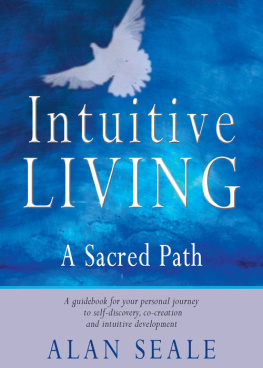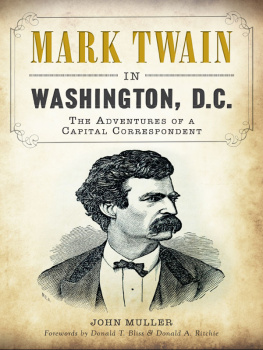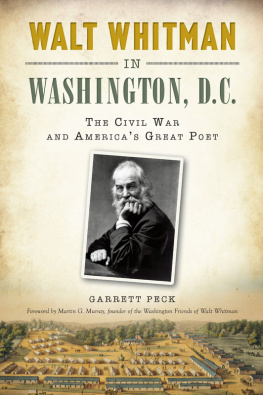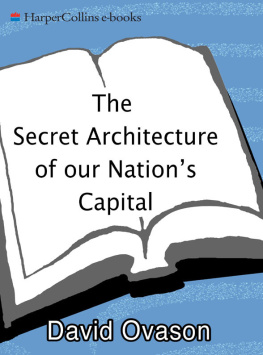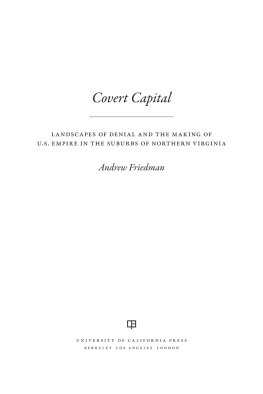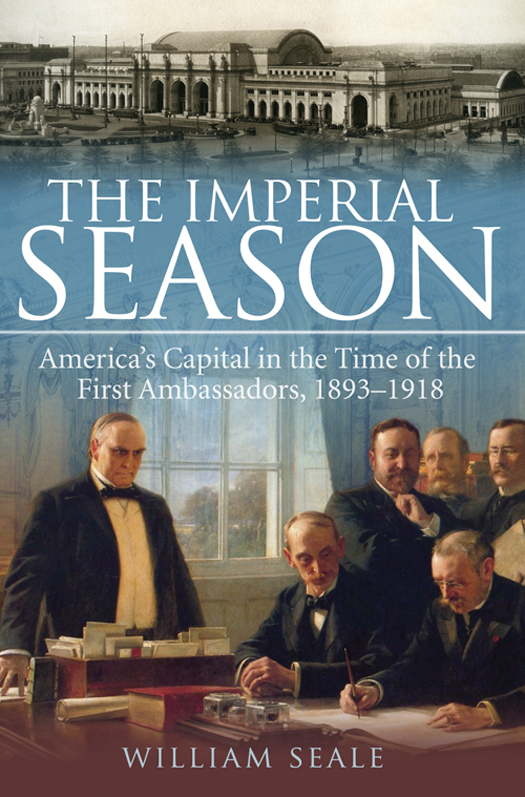All rights reserved. No part of this publication may be reproduced or transmitted in any form or by any means, electronic or mechanical, including photocopying, recording, or information storage or retrieval system, without permission in writing from the publishers.
This book may be purchased for educational, business, or sales promotional use. For information, please write: Special Markets Department, Smithsonian Books, P. O. Box 37012, MRC 513, Washington, DC 20013
Seale, William.
The imperial season : Americas capital in the time of the first ambassadors, 18931918 / William Seale.
Summary: Americas Capital in the Time of the First Ambassadors, 18931918Provided by publisher.
Includes bibliographical references.
1. Washington (D.C.)History19th century. 2. Washington (D.C.)History20th century. 3. DiplomatsWashington (D.C.) I. Title.
For permission to reproduce illustrations appearing in this book, please correspond directly with the owners of the works, as seen at the end of each image caption. Smithsonian Books does not retain reproduction rights for these images individually, or maintain a file of addresses for sources.
PREFACE
T his book begins in the capital of the United States in 1893 and ends there in 1918. During that quarter century the nation claimed a position of equality among the great powers for the first time in its history.
World power, if yet untested, presented a wholly new context for the United States. Reverberation from the sudden rise shook Washington long before it had much influence over the rest of the country. The character of official life and diplomacy transformed, and work started toward replacing Washingtons provinciality and symbolic shortcomings. Change came not with a single stroke but by many innovations that altered situations from what they had been. The old American capital seemed suddenly a new place.
Those who lived through the change, and even helped create it, were a varied lot. Some were merely powerful, some were merely talented, and some were merely rich, but all were overwhelmingly self-confident, and all considered themselves visionary. None lacked objectives. Most were builders on one level or another, the most ambitious broadcasting the nations new glory through public architecture and fine housesinspired by Paris and Rome, London and Vienna, Berlin and Budapest, and the other capitals across Europethat through the nineteenth century had been remodeled and extended to neoclassical magnificence. What they built still defines the heart of Washington today: the monuments and great civic buildings on the Mall as well as the mansions on the avenues that were designed as private houses but today serve as embassies.
The capitals age-old appeal of politics joined the citys social delights. Ambassadors from the ancient kingdoms of Europe crowned the diplomatic core in Americas century-old New World democracy. The State Department, which shared its headquarters with the Navy and War Departments next door to the White House, was the hub of an ever-growing wheel of American diplomats, with spokes reaching over the world. Both business and pleasure attracted a busy winter community of people devoted to goals too numerous to categorize. Even some reformers appeared. Like all the rest, they saw the capital as a place to get what they wanted. Altogether, the era saw a sweep of diverse winds, borrowed traditions, and ideas that reshaped capital life.
This book, I hope, revives the era and its spirit, visiting the various human forces that gave life to what I call the Imperial Season. The word imperial in the book title comes from Americas overseas expansionist impulse of the late nineteenth and early twentieth centuries that paralleled movements of longer duration in Europe. Season in the title is borrowed from the social period known as the season, which occurred in many cities of that time. Long ago the season was simply a loosely defined period of good times in winter after the crops were in, business was done, and it was good to relax and play. Washington knew it as the few months between December and spring, when Congress was in session and hospitality was notable. I recycle the word to stand for the whole quarter century, as an episode in American history, thus the Imperial Season.
Some of the characters you are likely to know well already, such as Presidents Cleveland, McKinley, Theodore Roosevelt, Taft, and Wilson. Others you may remember a little about, for instance, Secretary of State John Hay; John Sherman, politician and brother of the more famous general William T. Sherman; and the powerful volunteer leader of the Red Cross, Mabel Boardman. More, however, you probably do not know at all, such as the hostess Mary Scott Townsend, the diplomat Alvey Adee, and the glamorous feminist Inez Milholland. A few individuals you may have forgotten for a moment, such as the bombastic congressman Joe Cannon, the seafaring philosopher Captain Mahan, and the dreamer and builder of great fairs and city gates Daniel P. Burnham.
I have crafted this history as I saw fit. Some figures you may expect to find have been omitted. Usually these people were excluded because they did not serve my descriptive purpose, or, for all they might have promised, when weighed in the context of the whole story, their presence was merely repetitious of others who do appear. Personal letters and diaries have provided the main sources, in combination with public records of the Department of State and to a lesser extent those of the Departments of the Interior and the Army. Especially rich sources are the published memoirs, which, for the most part, I dug out of the great anonymity of used books for a few dollars each. Nearly all of them were written after World War I by people looking back on the Imperial Season as a time already remote and glowing in their minds as having been special. Countess Cassinis, the last written, was published in 1962 and provides a charming account of a young girls life in diplomatic Washington at the seasons peak. You will find reference to all of these in the notes and bibliography.
I wish to thank friends and colleagues for help and advice over the decade and more of research and writing: Charles M. Harris, James M. Goode, Joel Treese, Bonnie M. Hart, Will Seale, Marcia M. Anderson, Frederick J. Lindstrom, Anna J. Cook, Stephen Plotkin, Fiona Griffin, Liz Argentieri, Nenette Arroyo, Bruce R. Kirby, Annita Andrick, Karen Mark, James E. Holland, Lydia Barker Tederick, Carol Johnson, Molly Kudner, Mildred Elmore, James B. Renberg, Jeff Bridgers, Antoinette J. Lee, Jennifer Brathoved, Shane Hunt, Gary S. Scott, William Bushong, Ruth Lincoln Kaye, Amy Verone, Barbara M. Kirkconnell, Ellen McCallister Clark, Susan Raposa, Maria Downs, Valerie Sallis, C. Ford Peatross, Susan G. Everitt, of the Charles B. Everitt Book Agency, and, by no means least, Lucinda S. Seale.
At Smithsonian Books I thank Carolyn Gleason, director, Christina Wiginton, Matt Litts, Kathleen Stanley, and Jane Gardner. Thanks to Robin Whitaker for her thoughtful and comprehensive editing. I also wish to remember Caroline Newman gratefully for her early interest in the manuscript.


